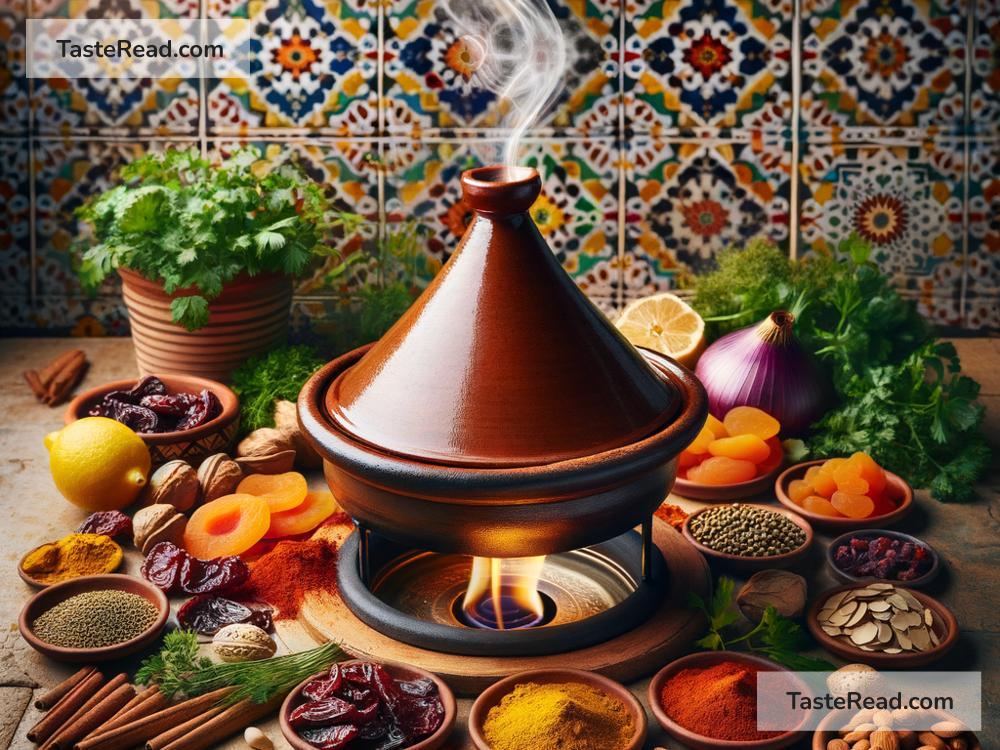The Cultural Significance of the Moroccan Tagine
Morocco is a country known for its rich culture, colorful traditions, and delicious food. Among its many food treasures, one stands out: the tagine. This iconic dish is more than just a meal; it is a symbol of the country’s history, hospitality, and way of life. In this blog, we will explore the cultural significance of the Moroccan tagine and why it has become so important in Moroccan homes and hearts.
What Is a Tagine?
Before we start, let’s explain what a tagine is. A tagine is both the name of a dish and the name of the unique clay pot in which it is cooked. The pot has a round base with high edges and a cone-shaped lid. This design isn’t just for looks—it helps steam and moisture circulate while cooking, keeping the food tender and full of flavor.
The dish cooked in the tagine pot is a slow-cooked stew made with meat, vegetables, spices, and sometimes dried fruits. Common ingredients include lamb or chicken, olives, preserved lemons, onions, garlic, and a mix of spices like cinnamon, ginger, turmeric, and saffron. The flavors are bold but balanced, creating a taste that is deeply satisfying.
A Bridge to Morocco’s Past
The tagine dates back centuries—it is believed to have originated during the Berber era, long before Morocco became the country we know today. The Berbers, also called Amazigh, are the indigenous people of Morocco, and they created this method of slow cooking to make meals hearty and flavorful, even with limited resources.
Over time, as Morocco interacted with other cultures through trade, travel, and conquest, new influences added layers to the tagine dish. Arabs introduced spices, Andalusians brought cooking techniques, and sub-Saharan Africans added unique ingredients. The tagine we know today reflects this rich history, making it a melting pot of Moroccan heritage.
A Symbol of Community and Connection
One of the most beautiful aspects of the Moroccan tagine is how it brings people together. In Moroccan culture, food isn’t just fuel; it’s a way to connect with family, friends, and neighbors. When a tagine is being prepared, it’s often cooked for hours, giving families time to sit, talk, and share stories while the aroma fills the house.
Tagines are traditionally served in a communal way—family members or guests gather around the table and eat directly from the shared dish using pieces of bread to scoop up the stew. This kind of dining creates moments of closeness, where everyone shares not just food but also laughter, friendship, and warmth.
In Moroccan hospitality, serving a tagine to guests is considered a gesture of kindness and generosity. It shows that you have taken the time and effort to cook something special, reflecting the deep value Moroccans place on welcoming others.
The Role of Spices in Moroccan Identity
When you think of Moroccan cuisine, one thing that always stands out is the spices. Spices play a significant role in the tagine, and they are central to Moroccan identity as well. Morocco has long been a hub for the spice trade due to its location between Africa, Europe, and the Arab world. This intersection has made Moroccan food celebrated for its bold, aromatic flavors.
A traditional Moroccan spice blend, called ras el hanout (which means “head of the shop”), is often used in tagines. It contains a mix of the finest spices, like cinnamon, cumin, turmeric, and nutmeg. Each family or market may have its own unique version of ras el hanout, giving tagines a personal touch that connects them to specific regions or homes.
Modern-Day Tagine: Tradition Meets Innovation
While the tagine remains a timeless dish, modern cooks have found ways to adapt and innovate. In Morocco, you’ll find many variations of tagine to suit different tastes. Some are sweet, featuring honey, prunes, and almonds, while others are spicy and savory. Vegetarians enjoy versions rich with pumpkin, lentils, or chickpeas.
Beyond Morocco, the tagine has gained popularity worldwide. Moroccan restaurants serve it to introduce people to the country’s cuisine, and home cooks abroad are experimenting with their own tagine recipes. Despite these changes, the core of the tagine—a dish rooted in family, hospitality, and history—remains the same.
A Dish That Tells a Story
The Moroccan tagine is more than just a delicious meal; it is a dish with deep cultural meaning. It represents the spirit of the Berbers, the legacy of Morocco’s spice trade, and the warmth of Moroccan hospitality. With every bite, you taste centuries of tradition and connection.
If you ever visit Morocco, trying a tagine is simply a must. But even if you can’t travel there, making a tagine at home can be a way to experience this rich culture. Cooking it slowly, sharing it with loved ones, and enjoying the bold flavors will give you a little taste of Morocco’s soul.
In the end, the tagine reminds us that food can be much more than nourishment. It can tell stories, preserve history, and bring people closer together—a true reflection of the rich and vibrant Moroccan culture.


